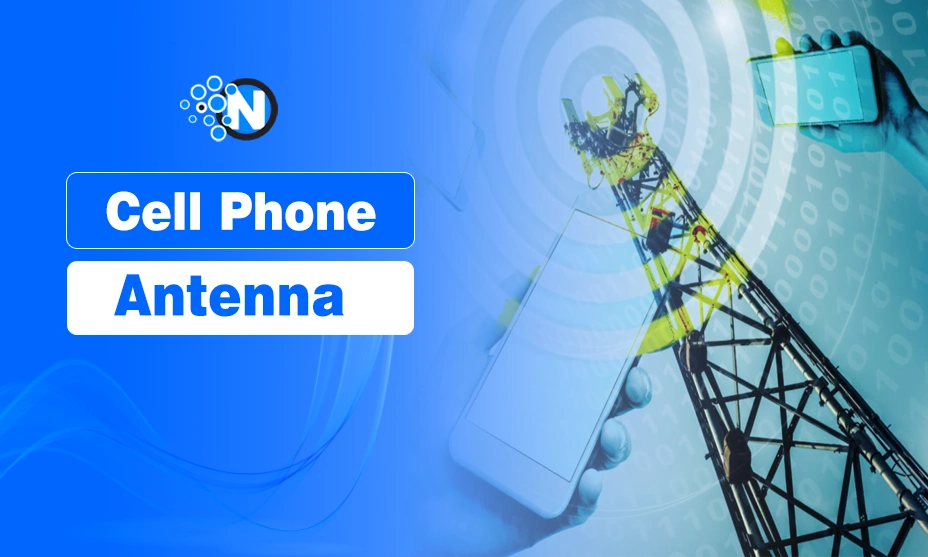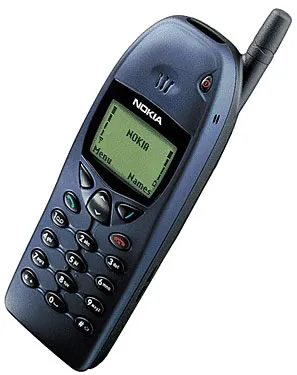What is a Cell Phone Antenna and How Does It Work?

Have you ever thought about how often in the age of seamless connectivity, we take for granted how effortlessly our cell phones allow us to call, text, and browse the internet? But behind this convenience lies a crucial component that ensures we stay connected, the cell phone antenna.
Whether you are making a call from a crowded city or sending a message from a remote countryside, your phone’s antenna is working behind the scenes and ensure signals are transmitted and received efficiently. But what exactly is a cell phone antenna, and how does it work?
Let’s break it down in an easy-to-understand manner.
What Is a Cell Phone Antenna?
Start creating Verdict in seconds, and convert more of your visitors into leads.
A cell phone antenna is a specialized device inside your mobile phone that enables it to communicate with cell towers. It sends and receives radio signals and allows your phone to connect to cellular networks for voice calls, text messaging, and internet access.
In simple terms, the antenna acts as the bridge between your phone and the nearest cell tower. Without it, your phone would be like a radio without an antenna, as it would be unable to send or receive signals effectively.
Modern cell phone antennas are cleverly designed to be compact and hidden within the phone’s casing, unlike the older external cell phone antenna that were visible on early mobile phones. Despite their small size, these antennas are incredibly efficient and support multiple frequency bands. As a result, they ensure strong connectivity across different networks like 2G, 3G, 4G, and 5G.
How Does a Cell Phone Antenna Work?
Start creating Verdict in seconds, and convert more of your visitors into leads.
A cell phone antenna’s job is to transmit and receive electromagnetic waves and convert them into electrical signals that your phone can understand. If you want more detailed information on how does a cell phone antenna work, go through this guide as I have enlisted the complete procedure below.
1. Sending Signals to the Cell Tower
When you make a call or send a message through Samsung Messages, Google Messages, or iMessages, your phone converts your voice or data into an electrical signal. This signal is then sent to the antenna, which converts it into radio waves and transmits them into the air.
These waves travel until they reach the nearest cell tower, which receives the signal and forwards it to the network infrastructure. Ultimately, they deliver your call or message to the intended recipient.
2. Receiving Signals from the Cell Tower
When someone calls you or sends you a message, the process happens in reverse. The cell tower sends radio waves that contain the signal for your phone. Your phone’s antenna captures these waves and converts them into an electrical signal.
The internal components of your cell phone process these signals and deliver clear sound, messages, or internet data.
Types of Cell Phone Antennas
Start creating Verdict in seconds, and convert more of your visitors into leads.
There are different types of antennas used in mobile phones, each designed to optimize signal reception in various conditions. I have mentioned them below
1. Internal Antennas (Built-in Antennas)
Modern smartphones use internal antennas, which are hidden inside the device. These antennas are typically made from conductive materials and shaped in a way that maximizes signal reception without increasing the phone’s size.
Advantages
- Compact and aesthetically pleasing
- Protected from physical damage
- Supports multiple frequency bands
Disadvantages
- Performance can be affected by phone orientation or user grip
- More sensitive to interference
2. External Antennas
Older mobile phones, such as early Nokia models, featured external antennas that were either fixed or extendable. These antennas provided strong reception but were gradually phased out in favor of internal designs.
Advantages
- Better reception in remote areas
- Less affected by interference from internal components
Disadvantages
- Bulky and less convenient
- Prone to physical damage

3. Patch Antennas
Patch antennas are used in satellite and GPS-enabled devices, often embedded in mobile phones to improve GPS functionality. They are designed to capture signals from satellites rather than cell towers.
Advantages
- High precision for GPS tracking
- Stable signal reception
Disadvantages
- Limited use in cellular communication
- Requires open sky visibility for best performance
4. MIMO (Multiple Input, Multiple Output) Antennas
Lastly, MIMO antennas are commonly used in 4G and 5G smartphones to improve data transmission speeds. These antennas utilize multiple signal paths to enhance connectivity, reduce dropouts, and increase reliability.
Advantages
- Faster internet speeds
- More stable connections
Disadvantages
- Consumes more power
- Requires advanced network infrastructure
Factors That Affect Cell Phone Antenna Performance
Start creating Verdict in seconds, and convert more of your visitors into leads.
Even the best antennas can struggle to maintain strong signals in certain situations.
Here are some key factors that influence antenna performance:
- Distance from the Cell Tower: The farther you are from a cell tower, the weaker your signal will be. This is why rural areas often experience more connectivity issues compared to urban locations with multiple towers.
- Physical Obstacles: Buildings, walls, trees, and even mountains can obstruct signals. If you’re indoors, especially in a basement or elevator, your signal might weaken due to interference.
- Weather Conditions: Rain, storms, and heavy fog can scatter radio waves, which can lead to temporary disruptions in signal strength. Outdoor cell phone antenna are primarily impacted. However, modern networks are designed to minimize these effects.
- Phone Design and Case Materials: Some phone cases, especially those made from metal, can interfere with your antenna’s ability to send and receive signals. If you are experiencing poor reception, try removing your case to see if it improves.
- Network Congestion: When too many people are using the same cell tower, such as in a crowded stadium or concert, the signal can weaken due to high traffic demand.
How to Improve Your Phone’s Antenna Signal?
Start creating Verdict in seconds, and convert more of your visitors into leads.
If you are struggling with weak signals, your phone’s internet won’t work properly. Here are a few practical solutions I usually follow when I struggle with this issue to improve my cell phone antenna signals.
Practical Solutions:
- Move to a Higher Elevation or Open Space: Being closer to open air or at a higher elevation can further reduce obstructions and improve reception.
- Avoid Interference from Objects: Try not to block the phone’s internal antenna with your hand, especially during calls. Holding your phone differently might improve signal strength.
- Use a Signal Booster: A Cell phone antenna booster or Signal boosters, similar to a WiFi booster, amplify weak signals and become useful in remote areas or inside buildings where signals are weak.
- Enable Wi-Fi Calling: If your carrier supports Wi-Fi calling, you can use your home or office Wi-Fi to make calls instead of relying on a weak cellular signal.
- Update Your Phone’s Software: Sometimes, poor reception can be due to outdated software. Keeping your phone updated ensures you are benefiting from the latest signal optimizations.
The Future of Cell Phone Antennas
Start creating Verdict in seconds, and convert more of your visitors into leads.
With 5G technology expanding globally, cell phone antennas are evolving rapidly.
The next generation of antennas is designed to:
- Support millimeter-wave (mmWave) frequencies for ultra-fast speeds
- Enhance beamforming technology, allowing signals to be directed more efficiently
- Improve efficiency in dense urban areas with multiple connections
- Enable seamless transitions between networks, including WiFi and satellite connections
Researchers are even exploring smart antennas that can self adjust based on environmental conditions. In this way, the cell phone antenna guarantees optimal reception at all times.
Final Thoughts
Start creating Verdict in seconds, and convert more of your visitors into leads.
These are the details about the cell phone antenna and how it works. It may not be something we think about daily, but it plays an essential role in keeping us connected. Whether you are making a phone call, browsing social media, or streaming a video, your phone’s antenna is constantly working to ensure a seamless connection.
As technology continues to advance, antennas will only become more efficient and also more powerful, and adaptable to the ever-growing demands of mobile communication. So, the next time you experience a weak signal, you will have a better understanding of the science and engineering behind your phone’s ability to stay connected.




